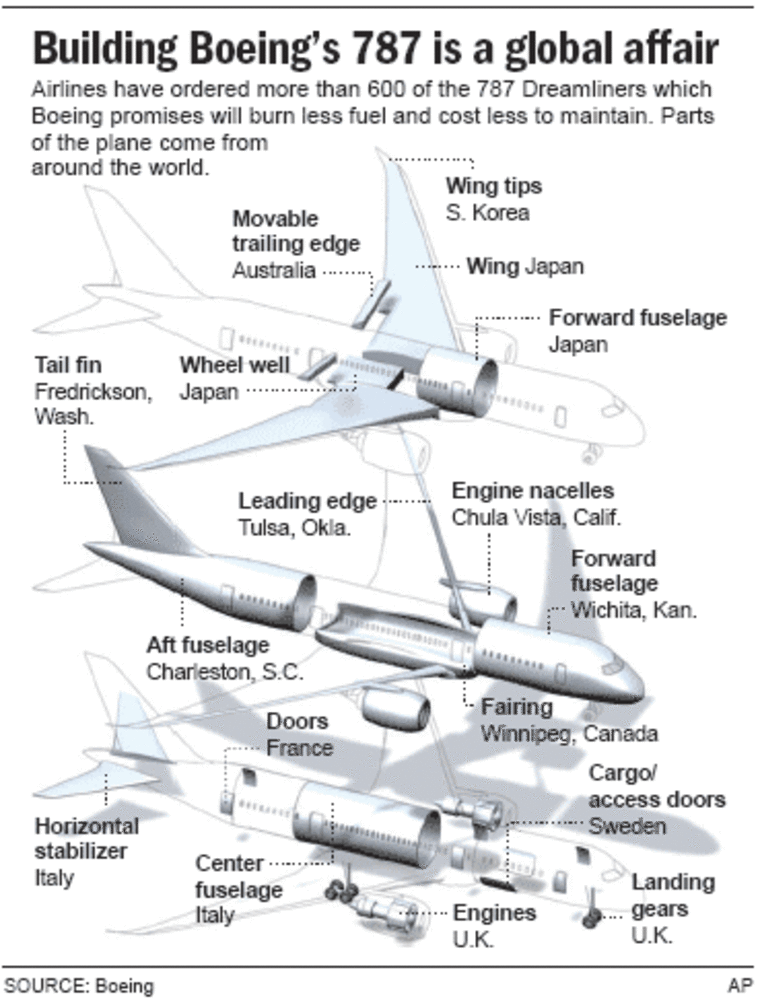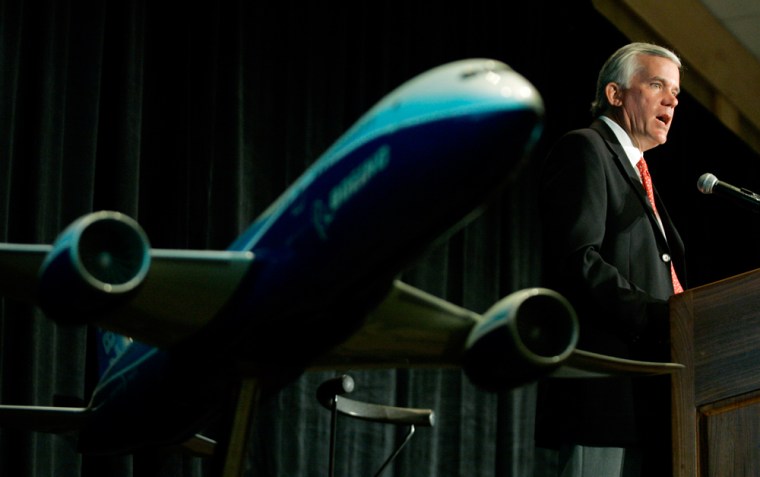None of the early problems Boeing Co. encountered with suppliers for its new 787 Dreamliner jet has shaken its confidence that it will smooth out production kinks and deliver the plane on schedule, the head of the program said Friday.
“We’ve had challenges. You always have challenges when you have a program this complicated going together in what is really kind of record time,” Mike Bair told reporters at a briefing two days before the first 787 was scheduled to be unveiled.
“It’s stuff we know what to do with,” Bair said. “We are expediting a lot of parts right now, and we’re going to make sure we get the production system running the way it needs to run.”
The 787 that will be displayed on Sunday still has about 1,000 temporary fasteners that must be replaced with permanent ones, and machinists will have to spend several more weeks installing and testing electrical wiring and other systems before the plane is ready to fly, Bair said.
Flight testing on the midsize, long-haul plane is expected to begin in late August or September, he said.
“We don’t schedule first flights,” Bair said. “The airplane flies when it’s ready. To put a firm date on the calendar might make you do something you don’t want to do.”
The 787, Boeing’s first all-new plane since airlines started flying the 777 in 1995, is scheduled to enter commercial service next May, when Japan’s All Nippon Airways Co. takes delivery of the first of 50 Dreamliners it has ordered.
To date, Boeing has won 642 orders for the 787. Factoring in non-binding commitments, delivery positions are filled through 2015, two years after rival Airbus SAS expects to roll out its competing A350 XWB.

In addition, Qantas Airways announced Friday that it would buy 20 more 787s and convert purchase rights for 20 planes into options. The deal, which has not been finalized, would boost the Australian carrier’s existing order to 85 787s — 65 firm orders and 20 options.
The 787 will be the world’s first commercial jetliner made mostly of carbon-fiber composites, which are lighter and sturdier than aluminum. Boeing has said that and other technological advances will make the 787 more fuel-efficient and cheaper to maintain.
Bair was asked why Boeing isn’t worried it will run into the types of delays that have plagued Airbus’s A380 superjumbo. He said it comes down to wiring.
He estimated that the A380 has some 350 miles of wiring — the main source of production problems that forced about two years of delays, slashing billions off its profit forecast for the coming years.
“We’re not going to have that problem,” Bair said, noting that the 787 has about 60 miles of wiring. The A380 is scheduled to enter commercial service in October.
Geoff Dixon, Qantas’ chief executive, and officials from several other 787 customers told the briefing they chose the Dreamliner largely because it will lower their fuel and maintenance costs while also improving passenger comfort.
Dixon noted that Qantas is also a customer for Airbus’ A380, and said he thinks both the superjumbo and the smaller 787s will be valuable additions to the airline’s fleet.
Boeing has said it will deliver 112 787s during its first two years of production, with an ultimate goal of having each plane spend just three days in final assembly, compared with 10-14 days for the larger 777, which like Boeing’s older jets is made mostly of aluminum.
Because demand for the 787 has exceeded the company’s expectations, it is looking at ways to boost production rates, but is not ready to say how much faster those rates will be or when the increase will happen.
“What we’re trying to avoid is making a premature decision on rates that would cause a lot of people to build a lot of facilities they might not need,” Bair said.
Though it anticipated the problem, an industrywide shortage of airplane fasteners has proved to be one of the stickiest production snags Boeing has encountered so far.
Bair said it will probably take another month or two before the first 787 gets fully fitted with permanent fasteners, and he expects the shortage to remain a problem for six to nine more months.
